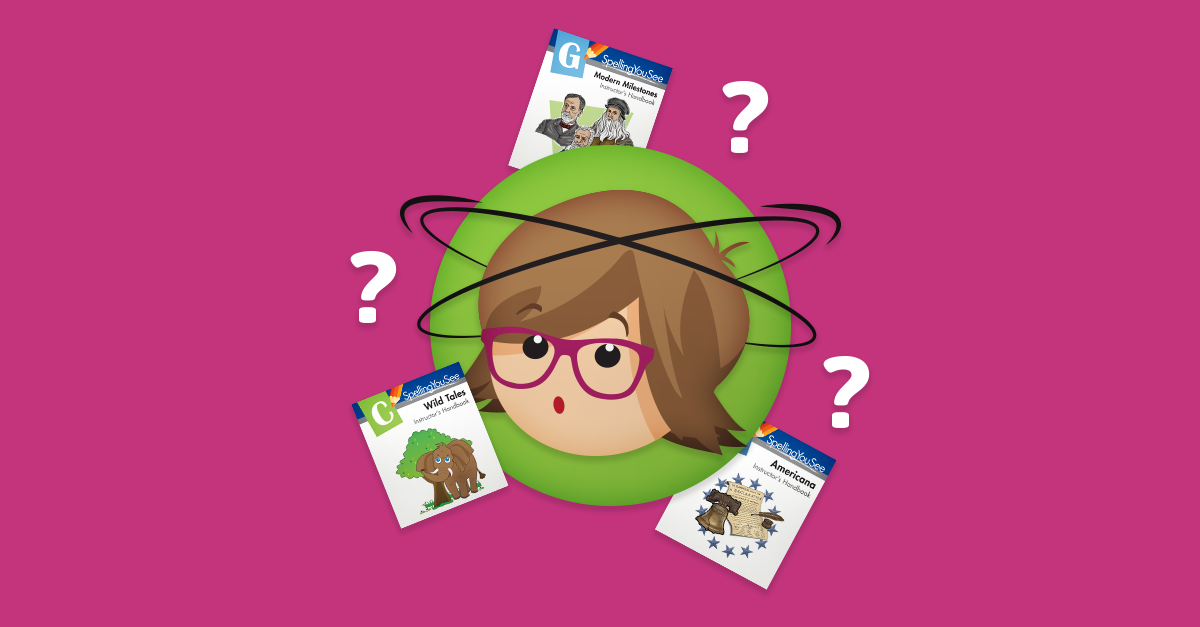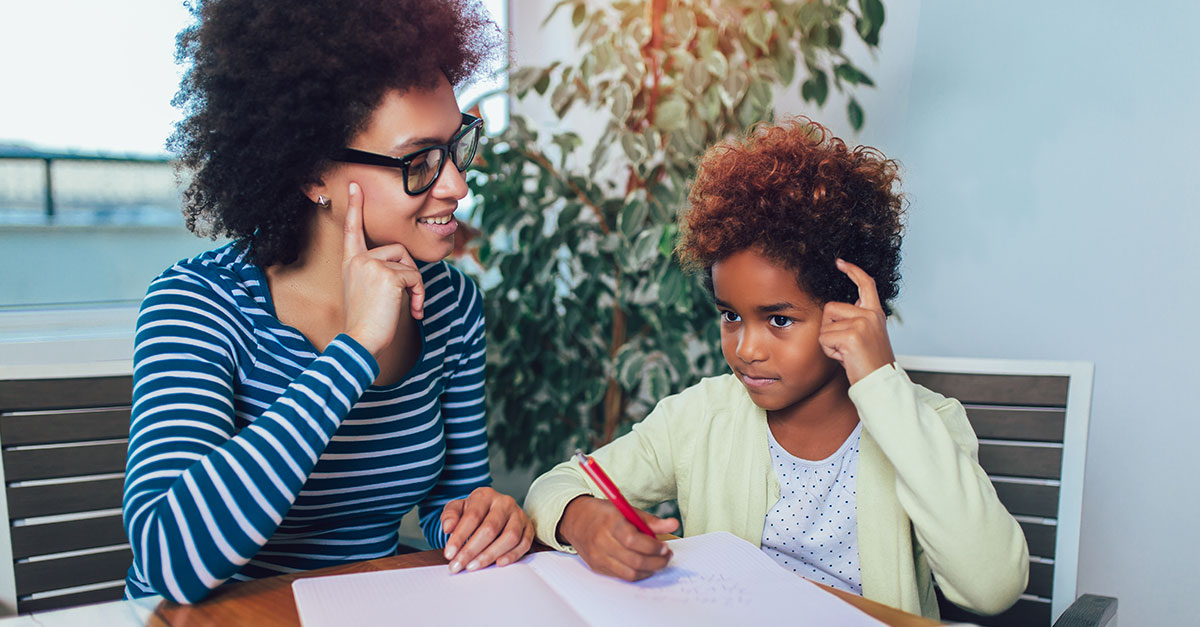
We’re often asked if Spelling You See uses phonics to teach spelling. Learn how Spelling You See’s use of phonics differs from most other programs.
It’s fun to be at a homeschooling convention and watch someone leaf through a Spelling You See book for the first time. The puzzled looks are often followed by questions such as:
• Where are the lists?
• How do you know which words to teach?
• Are there tests?
• Does this program use phonics to teach spelling?
Are Phonics Taught in Spelling You See?
The last question is the one that is the focus of this blog post. There is absolutely no question that a child must understand the relationships between sounds, letters, and words to develop strong language skills. Where these skills appear in the Spelling You See program, however, differs from most other programs. Here’s the reason why.
In a previous blog post, I explained the difference between the process of learning to read and the process of learning to spell. To summarize, when someone is reading an unfamiliar word, phonics rules are a useful tool to help him decode it, or “figure it out.” If the student doesn’t have sufficient phonics skill or if word doesn’t follow phonics rules (almost half of English words do not), the reader can use context clues from surrounding text and graphics to help him self-correct. Using phonics rules for spelling, however, is a much more difficult process. Once again, the brain begins the process by drawing from known phonics rules to try to encode the word, converting sounds to letters. Now, however, there is a much wider range of possible spellings. For example, there may be three or four ways to read the letters p-h-o-n-e, but there are at least six ways to write the sounds in the word “phone”, assuming that it is spelled phonetically. If the student chooses the wrong spelling, there is nothing to help him self-correct, and if the error is not addressed immediately, it is likely to make its way into long-term memory, where it will be difficult to replace.
Spelling You See recognizes the differences between these processes in the way in which phonics rules are incorporated into the program. It also utilizes phonics rules in ways that are appropriate for each stage of spelling development.
Phonetic Stage
The beginning levels of the program (Listen and Write and the first half of Jack and Jill) are designed for students who are still learning the associations between letters and sounds. Words are spelled in isolation at these levels, using only consonants and short vowels so that students don’t have to think through all the possible sounds that a particular letter can represent. Instead, they can focus solely on developing the skill of translating sounds to letters in the order in which they appear in a word.
Skill Development Stage
The focus for students in this stage is extending their language skills to a rapidly-increasing vocabulary. Since this learning extends through most of the elementary years, Spelling You See devotes several levels to this stage (Jack and Jill, Wild Tales, Americana, American Spirit, and Ancient Achievements). Phonics rules are actually de-emphasized in this stage because of the wide (and often confusing) variation in the ways that words can be spelled. Instead, students build their spelling skill by working with words in ways that encourage transfer to long-term memory, where they will be retrieved and used correctly in the student’s written work.
Word Extension Stage
Once students have mastered the correct spellings of many words, they are able to analyze them and construct new words by adding prefixes and suffixes. The final level of the Spelling You See program, Modern Milestones, walks students through the spelling rules associated with this process, such as doubling the consonant at the end of a short-vowel word, dropping a final –e, changing –y to –i, etc.
Knowing phonics rules is important for any student to be successful in the language arts. However, it is equally important to know when to use these rules in learning how to spell words. Spelling You See’s research-based approach guides both you and your child through this process, resulting in a confident speller who is able to communicate clearly and accurately.




Leave a Reply